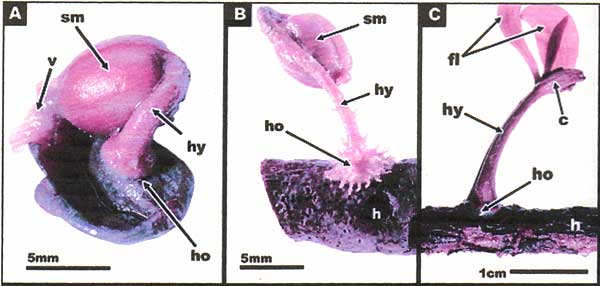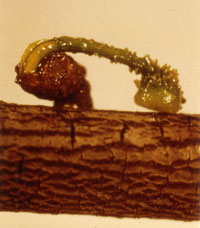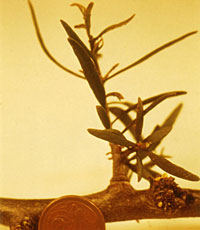Mistletoes - evolution
Germination patterns in loranthaceous mistletoes
Different patterns of seed germination are characteristic of each of the three large groups of mistletoes, and suggest that they have been derived independently during adaptation to aerial parasitism. In the 12-chromosome, predominantly tropical mistletoes of the Asian-Australasian region the pair of embryonic leaves (cotyledons) emerges from the seed and functions as the first pair of photosynthetic green leaves of the plant (below). These cotyledons are small and narrow, above a relatively long hypocotyl. Copious viscin initially cements the seed to the branch, but the long hypocotyl carries the holdfast clear of the seed mass and it becomes the secondary means of attachment.


In the 11/9-chromosome mistletoes of the Old World, in contrast, the cotyledons remain within the seed mass, and are not photosynthetic, instead drawing nutrients from the seed endosperm (below). There is generally less viscin, and the holdfasts are more highly developed.
 |
 |
In the 8-chromosome mistletoes of the New World, the cotyledons emerge, and are short, wide and green, and the hypocotyl is short, giving the seedling a very different appearance.
In all of these germination types, the haustorium is a highly modified root system which develops from the base of the holdfast after it is attached to the stem.
![An Australian Government Initiative [logo]](/images/austgovt_brown_90px.gif)

